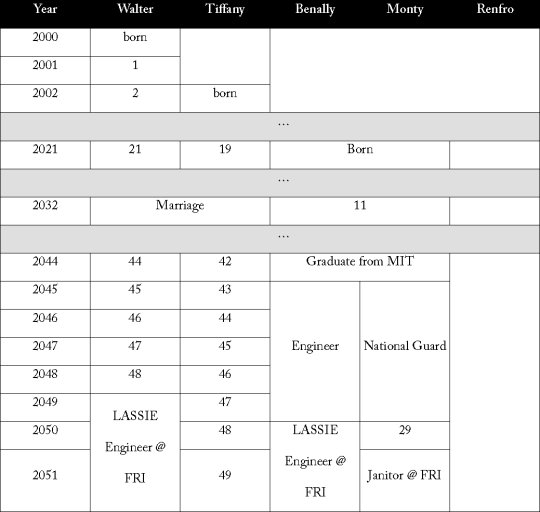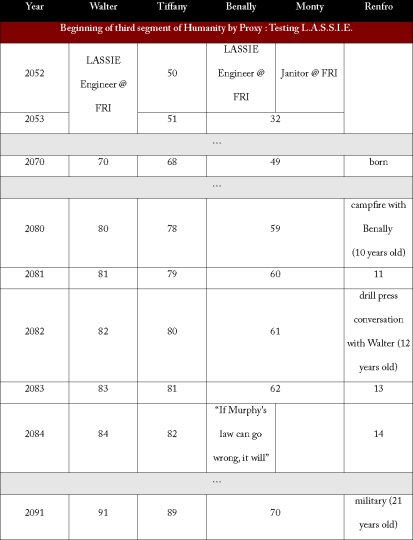Humanity by Proxy was my first solo-author sale, appearing in the 2011 January / February issue of Analog Magazine and continues to be my favorite. It came to me as I watched Janell, my wife, having an argument with our car’s GPS. Janell has strong opinions about the fastest way to drive from point A to point B. She is frequently (mostly? always?) correct. If she says we should turn left – I don’t argue, I turn left. However, the GPS also has strong opinions on the fastest route, which sometimes conflict with Janell’s recommendations. Technology suggests a right turn, My true love suggests a left turn. What am I supposed to do?
(This is obviously a rhetorical question. If you don’t understand why, call me and I’ll explain.)
My sons suggested I record Janell and place her voice in the GPS. Wouldn’t she feel better if the GPS was using a familiar voice? How would I feel?
How much of our humanity do we place in the circuits of our machines?
I’ve been a Software Product Manager and am familiar with the design, testing and release of complex products. From the outside, software engineering is a boring process of endless meetings and isolation in front of a monitor. From the inside, it’s an emotional and creative endeavor, sometimes involving loud voices and tears – certainly frustration. Walter, Jonathan Benally and Monty Cohon, three characters in the story, are distillations of the people I’ve met during this process and their passion is in the story. I felt honored by this comment from Stanley Schmidt when he bought the story for Analog…
“I reread this and was freshly impressed by how well you convey the flavor of engineering–which is seldom appreciated, much less understood, by the many who’ve never done any but take for granted the fruits of its labor.”
Honestly – this comment made the entire story worth every keystroke. (Thanks Stan).
Dementia
The first of the three stories, centered around Tiffany Stott’s encroaching dementia, was also the first segment I wrote. It was supposed to be the only segment. I explored the idea of technology echoing someone’s previous relationship and considered the short story a finished topic, only requiring three-thousand words. I shared it with Rick Lovett who informed me about the nuances of word count in the traditional Science Fiction publishing world. Three-thousand words was too much for flash fiction and not enough for most short-story buyers. Besides, Rick felt there was more to be said.
I wanted to sell the story, but I liked it as is. Adding a character, or a sub-plot, or extending Tiffany’s final confused walk wasn’t working for me. If I was going to extend the story, I needed something unexpected. I looked around for a part of the existing story that might have interesting potential. Officer Renfro wasn’t part of the story just yet, which left the Doctor, the Roomba and Walter.
I realized Walter was worthy of further exploration. But, since Walter was dead in Tiffany’s story, Walter’s tale would happen before Tiffany’s. However, I liked Tiffany’s story as it was; adding an additional story prior to Tiffany’s would require a re-write – the ending just wasn’t strong enough to carry both Walter and Tiffany. The not-so-obvious solution was to have Walter’s story appear after Tiffany’s, but set chronologically before it.
After I decided this was to be a two part story, the middle segment exploring the military background of the L.A.S.S.I.E. came to mind. But it needed people – the stories are about human relationships, not technology. Additionally, those people needed to relate to Tiffany and Walter; the overall story was developing two threads: L.A.S.S.I.E, and the relationships between the characters. I enjoyed the emerging challenge, but realized I needed to start taking notes to keep things straight. The characters were intertwined, and their lifelines needed continuity with each other. Here’s the resulting timeline…



Creating a timeline was essential to this story. If you are a writer, continuity is essential – your readers will demand it; losing track will mark you with a big “R” – for “Rookie”. I had to tweak this table several times to get it right.
Combat
Since I’ve never been in combat, the middle story required quite a bit of research and caution. I have no experience with automatic weapons and certainly no idea what it’s like to take cover from enemy gunfire. All of my war experience comes from the U.S. Army’s Stories of Valor (www.army.mil/valor), “Saving Private Ryan”, and Wikipedia articles about the M16 Rifle.
True-life Army stories give me shivers, but peering through the dispassionate account of the creation of the M16 rifle makes me extremely uncomfortable. The Wikipedia article on the creation of the M16 includes a chilling statement; “The number one predictor of casualties were the total number of bullets fired.” Thinking like a Product Manager, I find myself breaking the problem down into features, benefits, priorities and dependencies. How can I maximize the volume of projectiles delivered by a soldier? That question fails to connect to the person targeted with the maximized volume of downstream projectiles; the humanity has been washed out of the story.
The L.A.S.S.I.E., unlike the M16, still has elements of humanity on it’s motherboard. Private Renfro knows his Grandfather and Benally were instrumental on the project, but is unaware his improvised repair works because of their engineering ethics. Which is one of the messages I hope appears throughout the story – the ethics of engineers, in contrast to the popular myth of the amoral scientist.
The war segment may be the most exciting, but it’s main purpose is to glue the first and last segments together. I will note I couldn’t have written the last segment without having already written the second segment.
Chronology
I’m not sure I would recommend this reverse chronology type of story-telling. It worked for “memento”, but I probably confused some readers. Stan asked if I would add dates to the story to segment the sections. The additional date in the Karakoram Mountain segment was also his suggestion to clarify the sudden shift in perspective. It’s all very tricky and Jo-Anne Odell with Tangent mentioned in her review “I felt tossed through a succession of hoops.”
There are wisps of personal experience scattered throughout the stories, as well as appearances by many of my co-workers, friends and extended family. All characters appearing in this work are aggregates of cherry-picked mannerisms. Any resemblance to real persons, living or dead, is only temporary. Since L.A.S.S.I.E. isn’t a person, I’ll admit it was directly inspired by the Big Dog robot from Boston Dynamics.
After writing this story, I worry I may not have anything else worth saying. I’ve incorporated most of my personal experiences, used up a lot of good quotes and emptied my storage locker of all the good characters. Perhaps everything I write from here on is just a re-hash of these themes.
But then, along comes a story like “A Cup of Dirt”. I guess I have more stories in me…
